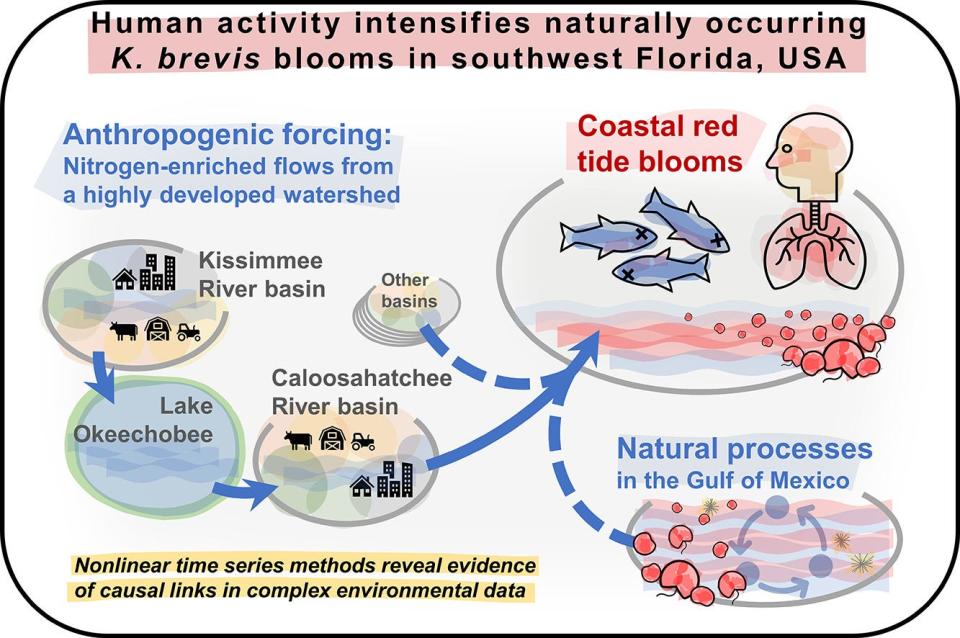Red tide update: Five things to know about toxic Karenia brevis
The state is reporting that only background concentrations of red tide can be found south of the Sarasota area, meaning that Lee and Collier waters are apparently free of toxic concentrations.
A red tide bloom has been lingering along the Southwest Florida coast for weeks, causing fish and shoreline bird kills.
But the most recent Florida Fish and Wildlife Conservation Commission reports show only background concentrations in Lee and Collier.

The bloom was measured at 1 million cells per liter and higher in both counties in recent months.
Once blooms reach toxic levels, red tide can cripple the local tourism, real estate and recreational fishing industries — three of the top money-hauling professions in our region. With red tide season falling between late summer and late winter, here are five things you should know about Karenia brevis.
1-Red tide blooms are natural but modern conditions are not
Red tide blooms have been documented along this coast for centuries, long before human impacts from farming and development hit the Sunshine State. But, blooms are stronger, longer-last and more frequent than they were 50 years ago, according to researchers at the University of Miami.
Larry Brand and other researchers there have documented the increasing intensity of red tide blooms over time, and he and many other experts say nutrients running off the Southwest Florida landscape contribute to bloom concentrations along the shoreline and in bays and rivers.
So while the initiation of blooms appears to be a natural phenomena, they're stronger and longer-lasting than they were before South Florida was largely drained and developed.
2-Cold fronts can break up blooms
The organism that causes red tides here like warm, calm waters. Those conditions are typically found here in late summer and early fall, which is when blooms tend to form.
Although they have been recorded in every month of the year, the blooms tend to start in October and end by February or March. That's not a coincidence since it's still warm in October; and the region experiences cold fronts every seven to 10 days during the winter and spring.
So the cold weather stagnates growth while the heavy winds break apart the blooms, experts say.
3-Blooms are sometimes toxic
When concentrations reach around 100,000 cells per liter, red tide blooms can turn deadly for marine life and shoreline and wading birds. Experts say the toxin bioaccumulates, so predators high on the food chain often suffer.
Even dolphins, sea turtles and whale sharks have succumbed to toxic conditions here in recent years.
The toxicity also impacts humans, especially those with pre-existing respiratory issues.
4-Where does red tide get its name?
Red tide may sound like the nickname of some college football team but the term actually refers to the coloration of the waters when blooms are strong.
Rusty, brownish and red-colored waters along the Southwest Florida coast are trademarks of a toxic bloom.
5-What are the long-term impacts of red tide blooms?
Historically, birds, fish and marine life evolved along with red tide blooms, so local wildlife was able to recover from deadly events.
But now the blooms are more frequent and intense, and that may have an undue impact on sea life as conditions have changed in the matter of decades, not millennia, scientists say.
Researchers at places like Florida Gulf Coast University's The Water School are also studying ways in which aerosolized toxins interact with the human body.
People with pre-existing respiratory issues are prone to breathing irritation during even mild red tide conditions.
Connect with this reporter: @ChadGillis on Facebook.
This article originally appeared on Fort Myers News-Press: Red tide counts better as strong cold front hits Naples, Fort Myers

